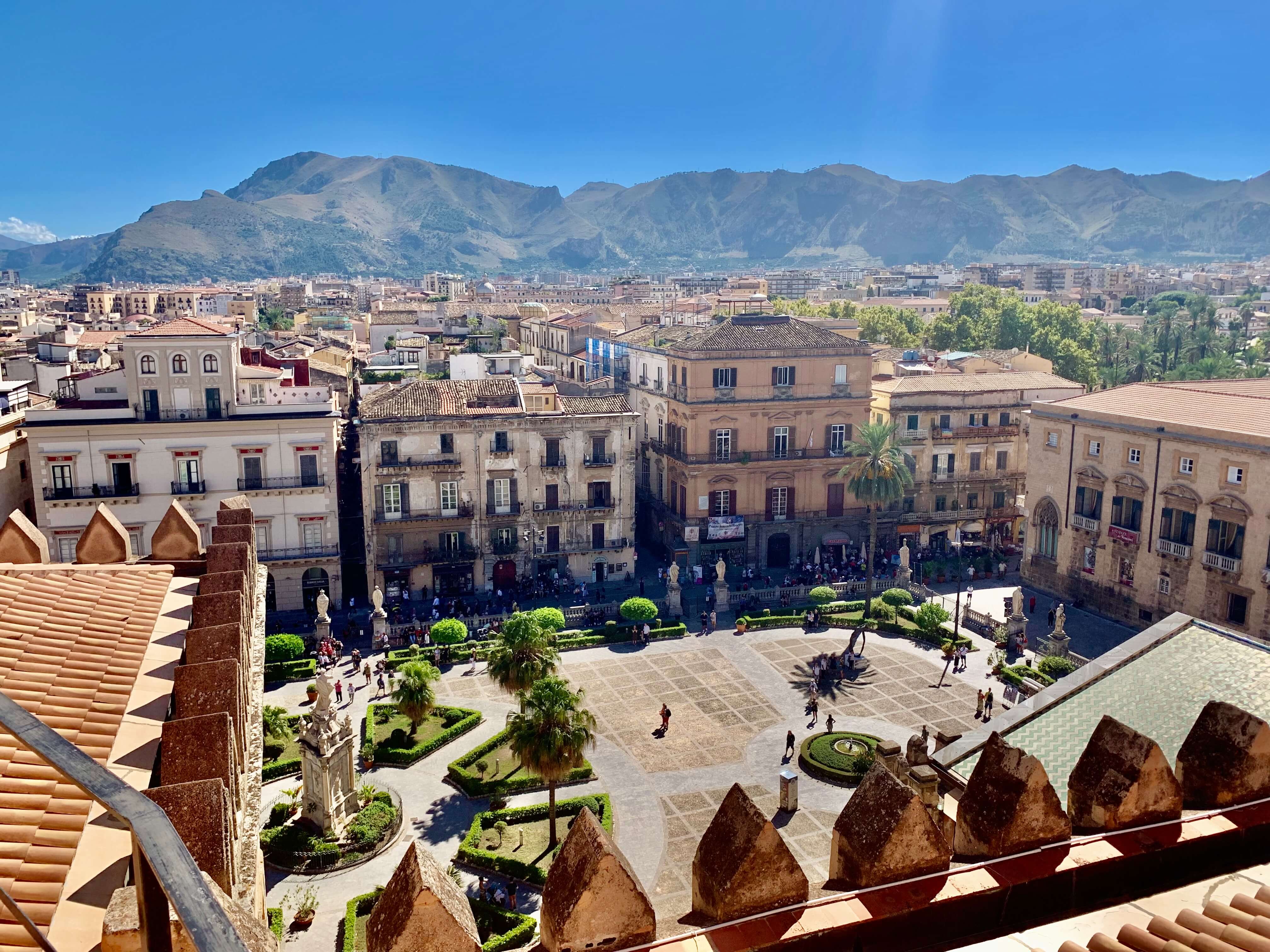- Home
- History of Sicily
- Emirate of Sicily
- How Moors Conquered Sicily
The Influential Legacy: How the Moors Conquered Sicily and Shaped Its culture
In the Middle Ages, Europeans called the Muslims who ruled North Africa the "Moors." After conquering parts of Spain and Portugal, the Moors conquered Sicily.
But how? And what were the consequences that are still seen in Sicilian culture? Read on and be surprised.
In this article, we explore the Moors' transformative and enduring legacy. Discover how these conquerors shaped the island, forever imprinting its rich heritage.
The Historical Context of the Moorish Conquest
In the early 9th century, the Aghlabid dynasty, a Muslim ruling family from North Africa, set its sights on the strategically located island of Sicily, which at the time was part of the Byzantine Empire.
The Moors - as they were known - were driven by a desire to expand their sphere of influence and establish a foothold in the Mediterranean region.
The Byzantine Empire, weakened by internal conflicts and external pressures, could not effectively defend its holdings in Sicily, making the island an attractive target for the ambitious Moorish conquerors.
The Moorish invasion of Sicily began in 827 CE, with a small force of soldiers landing on the island's western coast. Over the next few decades, the Moors gradually chipped away at Byzantine control, capturing city after city and consolidating their hold on the island.
The conquest was challenging, as the Moors faced fierce resistance from the local population and the Byzantine forces. Still, their superior military tactics and unwavering determination ultimately led to their victory.
The Moors conquered Sicily by the start of the 10th century, with Palermo as the capital of their new domain. The island's strategic location, rich natural resources, and thriving trade networks made it an invaluable asset for the Moorish rulers.
With them, the Moors brought a unique blend of Islamic, Arab, and North African influences that would shape the very fabric of Sicilian society in the centuries to come.
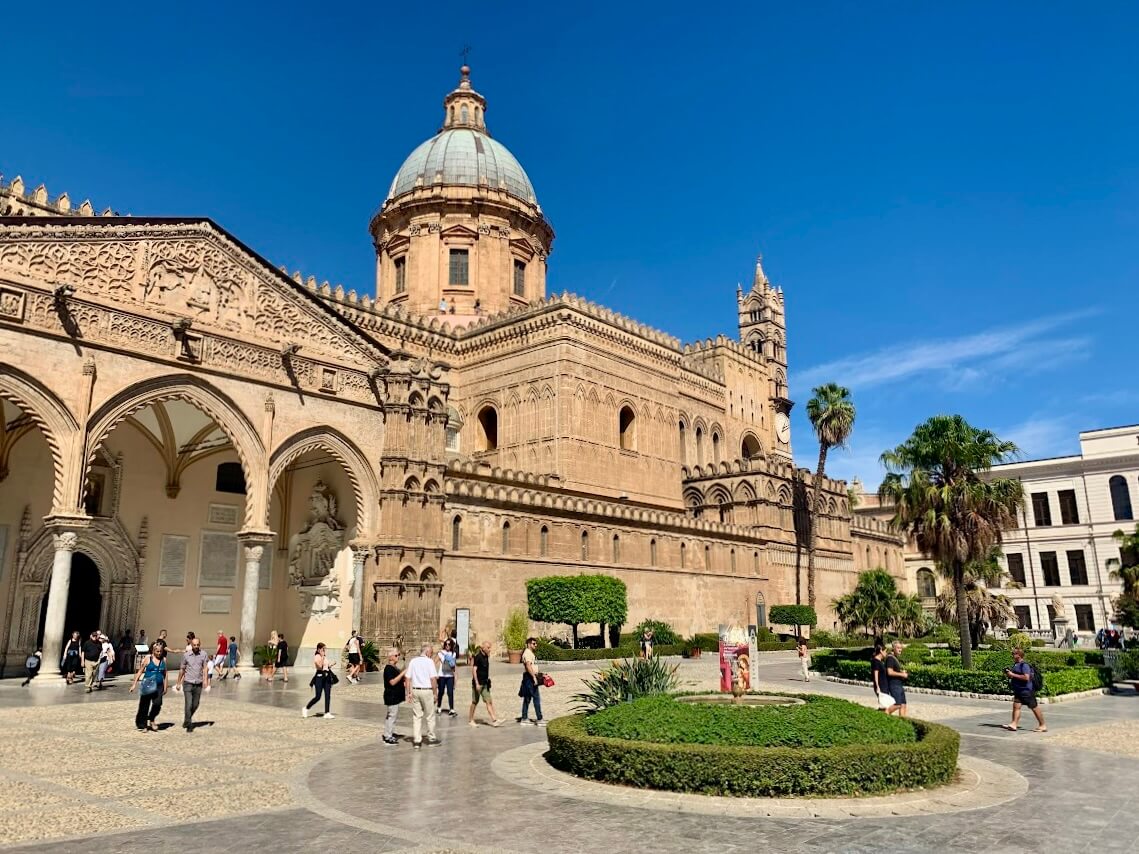 Moors were the first to make Palermo the capital of Sicily. The town's main mosque was located where its cathedral now stands.
Moors were the first to make Palermo the capital of Sicily. The town's main mosque was located where its cathedral now stands.Attacks on the Continent: The Seeds of the Future Defeat
The Moorish military campaigns was not limited to Sicily.
At the same time as the Moors conquered Sicily, they attacked southern Italy on the mainland. Their most significant achievement there was the capture of the port city of Bari.
The Moorish attacks on the port towns of mainland Italy eventually contributed to their own destruction. Angered by the continuing piracy, Byzantium assembled an army to recapture Sicily from the Moors.
The successful invasion was primarily thanks to the Norman soldiers, who acted as mercenaries in the Byzantine army. Later, when they came to power, they drove Byzantium out of southern Italy and took Sicily from the Moors.
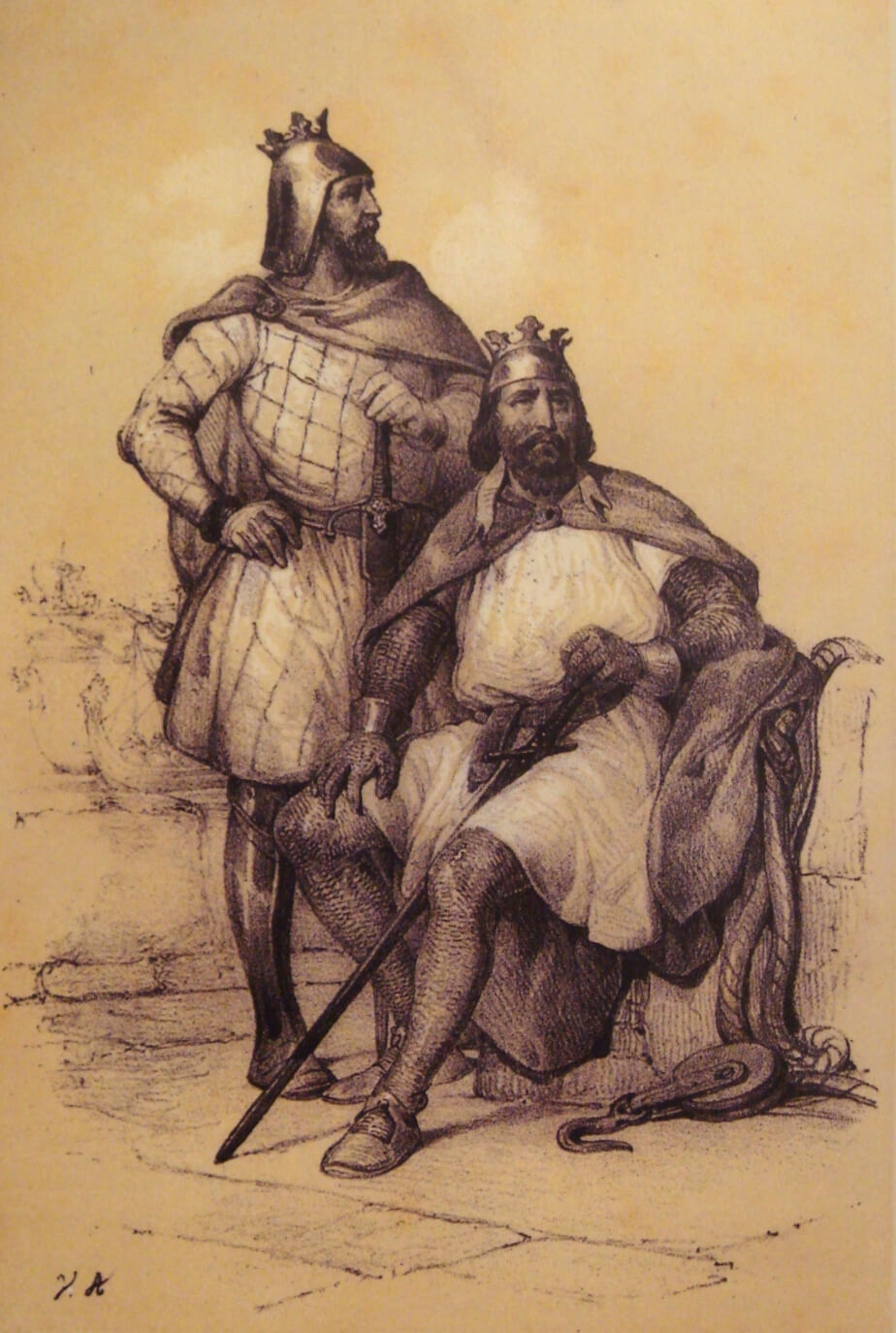 The Norman adventurer Robert Guiscard eventually conquered Sicily from the Moors, together with his brother Roger. Roger's son became the legendary King Roger II.
The Norman adventurer Robert Guiscard eventually conquered Sicily from the Moors, together with his brother Roger. Roger's son became the legendary King Roger II.The Impact of Moorish Rule on Sicilian Society and Culture
After the Moors conquered Sicily it proved to be a blessing for the island. The situation had been bad ever since the Romans had ruled it.
Muslims were at the forefront of the sciences and the arts in the Middle Ages. So, when the Moors conquered Sicily, they brought many innovations that eventually improved the lives of the locals considerably.
One of the most significant impacts of Moorish rule was introducing a new social and political structure. The Moors established a sophisticated system of governance, with Palermo serving as the capital and the center of their power.
The island was divided into administrative districts, each with its own governor and taxation system, which allowed the Moors to manage and control the territory effectively. Later, when the Normans came into power, they left these Moorish government institutions largely intact.
The Moorish rulers also encouraged the growth of trade and commerce, turning Sicily into a bustling commercial hub. The island's strategic location and the Moors' extensive trade networks made it a vital link in the Mediterranean economy.
Sicilian ports became hubs for exchanging goods, ideas, and cultural influences as merchants and travelers from across the region converged on the island. This contributed to the spread of the sciences and arts in Sicilian society.
The influx of wealth and the exposure to diverse cultures led to a flourishing of the arts, with Sicilian artisans and craftspeople incorporating Moorish design elements and techniques into their work. The island's architecture, ceramics, textiles, and mosaics all bear the unmistakable influence of Moorish aesthetics.
The Moorish rulers also contributed significantly to Sicilian agriculture, introducing new crops and innovative irrigation systems that revolutionized the island's farming practices. The introduction of citrus fruits, sugarcane, and other cash crops transformed the Sicilian landscape and boosted the island's economic prosperity.
One of the most enduring legacies of Moorish rule in Sicily was blending cultures and fostering a tolerant society. Under Moorish governance, Christians, Jews, and Muslims coexisted in relative harmony, with each community enjoying a degree of autonomy and religious freedom. This multicultural environment led to a cross-pollination of ideas, customs, and traditions, shaping the unique cultural identity that defines Sicily today.
Moorish Influence on Architecture in Sicily
Moorish influence extended to the arts, sciences, agriculture, and architecture. Many examples exist, particularly in the Palermo region.
For example, the Monreale Cathedral, a magnificent 12th-century structure, features a stunning array of mosaics that combine Christian and Islamic motifs, creating a harmonious and visually captivating synthesis of the two traditions.
The same kind of craftsmanship can be found in the Cappella Palatina, a chapel within the Palazzo dei Normanni in Palermo, and in the cathedral of Cefalu. These are stunning examples of the Moors' artistic prowess and the ability of the three cultures to work together.
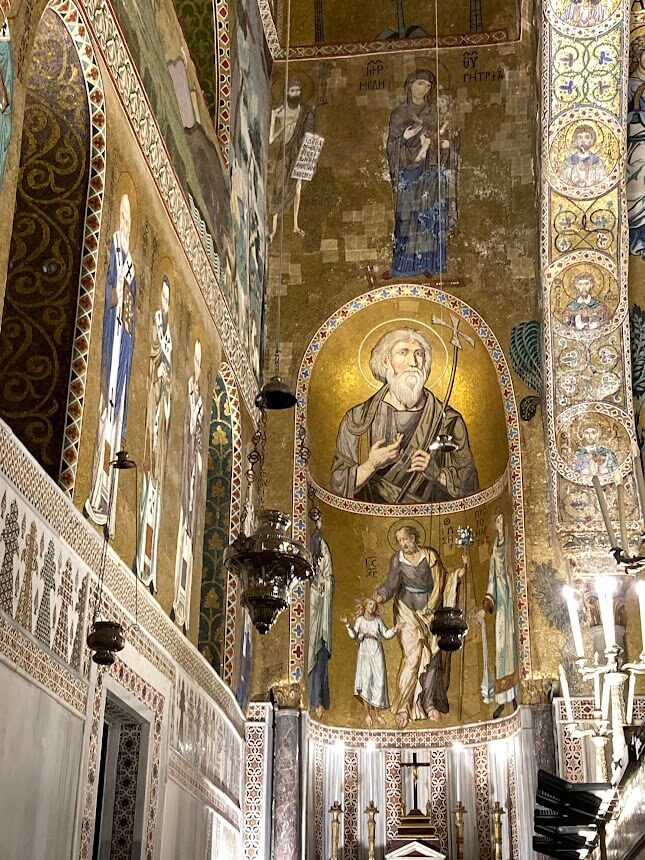 Cappella Palatina, also known as the Palatine Chapel, was built in the Norman era. It is one of the finest examples of different cultures - Norman, Muslim, and Byzantine - working together.
Cappella Palatina, also known as the Palatine Chapel, was built in the Norman era. It is one of the finest examples of different cultures - Norman, Muslim, and Byzantine - working together.Economic and Agricultural Advancements Under Moorish Rule
One of the Moors' most significant contributions to the Sicilian economy was the expansion and diversification of trade networks. As seafaring people, the Moors were well-versed in maritime trade.
They established extensive commercial ties with other regions of the Mediterranean, North Africa, and the Middle East. This influx of trade and commerce brought wealth to the island. It exposed Sicilians to various goods, ideas, and cultural influences.
The Moors also introduced innovative agricultural techniques and practices that revolutionized Sicilian farming. They brought a deep understanding of irrigation systems, crop cultivation, and land management, which they applied to the island's diverse landscape. These had been in bad condition ever since the Romans plundered the island's soil.
Introducing new crops, such as citrus fruits, sugarcane, and cotton, transformed the Sicilian countryside - not to mention its cuisine - and created new economic opportunities for the island's farmers and merchants.
The Moors' emphasis on efficient water management was particularly significant. They developed sophisticated irrigation systems to cultivate previously arid or semi-arid regions.
The Moors' agricultural advancements also had a ripple effect on the Sicilian economy, as the increased food production and the introduction of cash crops led to a surge in trade and commerce.
Sicilian ports, such as Palermo and Messina, became hubs for the export of agricultural goods, further strengthening the island's economic ties with the broader Mediterranean region.
The Decline and Eventual Expulsion of the Moors from Sicily
Moorish rule in Sicily, though long-lasting and transformative, ended in the 11th century. The decline and eventual expulsion of the Moors from the island resulted from a complex interplay of political, military, and social factors that ultimately led to the reassertion of Christian power in the region.
The rise of the Norman dynasty was only the first step that contributed to the Moors' downfall. The Normans, a group of French-speaking warriors, had established a foothold in the region and gradually expanded their influence.
In the mid-11th century, the Norman leader Robert Guiscard and his brother Roger launched a concerted campaign to conquer Sicily, capitalizing on the growing internal tensions and power struggles within the Moorish ruling class.
The Normans' military prowess and strategic alliances with local Christian factions allowed them to gradually reduce Moorish control over the island.
Despite their formidable military capabilities, the Moors could not mount an effective and coordinated defense against the Norman onslaught, as they were increasingly divided by internal political and religious conflicts.
By the late 11th century, the Normans had successfully conquered the last Moorish strongholds in Sicily, marking the end of Moorish rule on the island. The Moors were allowed to stay on the island, and Muslim civil servants mainly were allowed to keep their seats in the island's administration.
It was only a couple of hundred years later, as the catholic church extended its grip, that the Muslims were forced to leave the island or convert to Christianity. This ended their centuries-long presence in Sicily.
The decline and expulsion of the Moors from Sicily were significant turning points in the island's history, as they ushered in a new era of narrow-minded Christian dominance in the region.
However, at this time, the Moors had already established their legacy on Sicilian culture, architecture, and cuisine, leaving an indelible mark on the island's rich and diverse heritage.
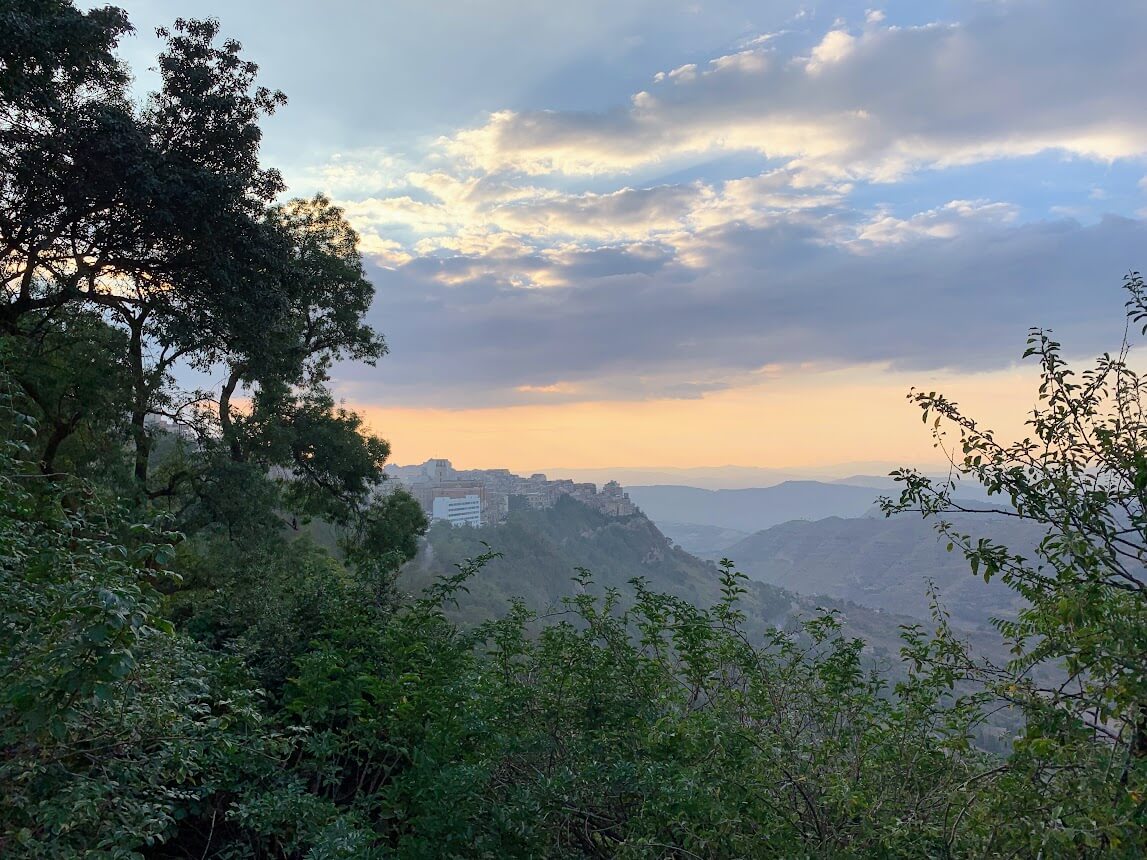 Enna was one of the Muslim strongholds. It is in the middle of Sicily and was one of the last to be conquered by Normans, thanks to its ideal hilltop location.
Enna was one of the Muslim strongholds. It is in the middle of Sicily and was one of the last to be conquered by Normans, thanks to its ideal hilltop location.How the Moors Conquered Sicily: Conclusion
Although the Moors conquered Sicily in the 11th century, their legacy continues to be felt in the island's cultural, architectural, and culinary landscape.
Despite their eventual expulsion, their influence on Sicilian society has endured, shaping the island's identity in profound and lasting ways. Their influence can also be seen in the island's language, with many Sicilian words and phrases having roots in Arabic.
The Moors' impact on Sicilian cuisine is equally profound. Introducing new crops, such as citrus fruits, sugarcane, and spices, has lasting the island's culinary traditions. Dishes like arancini, cannoli, and granita, which have become synonymous with Sicilian gastronomy, bear the unmistakable influence of Moorish cooking techniques and ingredients.
Today, these culinary traditions are celebrated and promoted as a vital part of Sicily's cultural identity, drawing in visitors from around the world who seek to experience the island's rich flavors and traditions.
Related:
(December 1, 2024)
Recent Articles
-
Sicilian Food - Rich Flavors, Endless Passion
Apr 09, 25 09:54 AM
All you need to know about Sicilian food, its ingredients and history. -
Things to Do in Palermo - Tips for a Perfect Holiday
Apr 05, 25 04:27 AM
Things to Do in Palermo - From historic landmarks to delicious food, this guide has it all. -
The Story of Tommaso Buscetta: From Mafia Boss to Key Witness
Mar 30, 25 05:12 AM
Tommaso Buscetta built Sicilian Mafia into a global empire - which he then destroyed.
Follow MANY FACES OF SICILY on Facebook, Instagram, Bluesky & Pinterest
Contact: vesa@manyfacesofsicily.com

